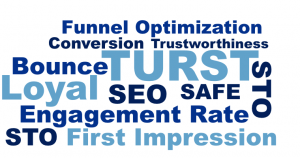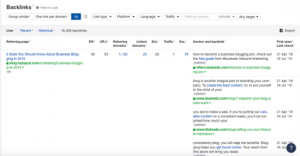A chargeback is when a customer’s bank forces a reversal of a transaction payment to the merchant, and having excessive chargebacks can sink your business.
Imagine that you have an idea of improving people’s lives. And you’ve worked your behind off in translating your vision into fantastic digital commerce. Your sales are picking up, and users are gradually catching your vibe.
You expect this uptick in sales to translate into increased profits. Still, somehow, that’s not the case because even though the metrics show the delightful hockey stick of a positive revenue, the company is hemorrhaging cash due to payment disputes and chargebacks.
So what in the world is a chargeback? And how can you prevent it from sinking your company?
If that’s your predicament, guess what, you’re in good fortunes! This article will help you gain a better understanding of the origin of chargeback. And you will also learn simple hacks to minimize its occurrence or win the dispute when they happen.
A simple explanation of a chargeback and why chargebacks happen
In simple terms, a chargeback is when a customer’s bank forcefully reverses a transaction payment to the merchant.

- StockSnap / Pixabay
The logic behind the creation of chargebacks stems from when consumers began to notice incorrect and unjust billings on their credit cards in the early 1970s.
There were two significant issues of concern. The first is the possibility of a cardholder losing their credit card, resulting in overwhelming bills. And the second was the fear that fraudulent merchants could take advantage of unstructured digital commerce procedures of those days to rip off their clients by inflating prices or billing them repeatedly for the same transaction.
That prompted the consumer protection agency to take immediate action in designing an instrument that could protect the cardholder against such threats.
Consequently, U.S lawmakers passed The Fair Credit Billing Act (FCBA) of 1974 to address the highlighted issues.
The FCBA protects consumers from unfair billing practices and provides a mechanism for addressing billing errors in “open-end” credit accounts, such as credit card or charge card accounts, through what we know as a chargeback today. And in that sense, if a client has issues with a specific transaction, they can seek remediation by demanding a chargeback from their bank rather than contact the merchant for a refund.
Although chargebacks serve to mediate inevitable disputes that can arise between merchants and customers, the process of administering chargebacks often puts merchants in an unfavorable position.
For starters, whenever a cardholder files a chargeback, their bank will automatically deduct the sum of the disputed transaction and applicable chargeback fees from your merchant account. The merchant is seen as being automatically guilty of whatever crime the customer list.
And being a consumer protection mechanism, the process of reversing the chargeback is hugely problematic. You could lose more money and waste precious time trying to fight it. And even when you win the dispute, you only get to recover the transaction revenue. The chargeback fee is non-negotiable.
Suffice it to say that some chargebacks (up to 40%, to be specific) result from errors on the merchant’s side. Others can be legitimate issues of digital fraud, such as unauthorized transactions due to account takeover. Yet, research has shown that the majority of chargebacks are fraudulent. Some customers intentionally file a chargeback for legitimately purchased goods or services. That technique is known as friendly fraud, and from estimates by financial analysts, business owners lost as much as $ 50 billion to friendly fraud in 2020.
Six proven hacks for mitigating chargebacks like a pro

- StartupStockPhotos / Pixabay
Chargebacks have become a significant threat to sustainability for businesses of all sizes. For example, merchants with excessive chargebacks pay higher chargeback fees than the $ 20 to $ 50 generally imposed. Plus, they also incur higher processing fees — and can lose their merchant accounts in extreme cases. Losing your merchant account means that you are basically screwed as you can’t process any more money.
One study puts the cost of chargeback fees to excessive chargeback companies at 2 to 3 times the transaction amount over a period.
Before diving into the various mitigation hacks, you must understand the terms used in a chargeback cycle and what they represent.
- Retrieval Request: Before a chargeback happens, an issuer can send the merchant a retrieval request and demand information on a specific payment transaction. That could be in the form of a sales receipt, invoice, or contract. Banks or card networks often send retrieval requests when they need further details, for example, when a cardholder doesn’t recognize a transaction on their billing statement.
- Representment: As per industry standards, chargeback representment is the merchant’s chance to challenge the dispute with compelling evidence. If a merchant decides to take that route and fight the chargeback, the issuer will review their rebuttal and evaluate whether the chargeback is merited or not.
- Pre-arbitration: If the issuer does not agree with your representment, a second chargeback, also known as pre-arbitration, occurs. Arbitration can happen when the cardholder’s bank goes on disputing the transaction and rejects your initial representment, pre-arbitration response, or second chargeback response. When this happens, the card network will decide how to settle the dispute.
Easy-to-apply tips to help you mitigate chargebacks for your e-commerce store
Having understood those crucial terminologies, below are simple hacks that’ll help you mitigate chargebacks like a pro.
- Have explicit order cancellation and return policy: Ensure your customers know how to cancel or return their orders if they choose to do so. Some chargebacks happen when buyers can’t opt-out of their subscriptions. And research has shown that 80% of cardholders filed a chargeback simply because they didn’t have time to request a merchant’s refund.
- Make your business billing statement easy to recognize: Some cases of unauthorized transaction chargebacks are manifestations of customers not recognizing the merchant’s billing statement. Or when they forgot specific subscription packages. Make it easy for your users to track your deductions in their billing records.
- Short-circuit fraudulent transactions with authentications: Ensure you obtained customer signatures, PINs, or CVV codes for CNP transactions. A recent survey shows that Card-Not-Present fraud could reach $ 130 billion by 2023. And according to industry analysis, the cost of false declines to businesses ranges from $ 118 to $ 331 billion in the U.S. alone.
- Play by industry standards and best practices: Use proven security protocols for card transactions and keep detailed transaction data. Be sure to collect comprehensive details on each order to prove each transaction’s authenticity and have enough compelling evidence in case of a chargeback.
- Track your shipments and add insurance coverage: When shipping orders of .high-value, be sure to ship them with insurance and tracking. Ensure your customer has such details so they can quickly tell the status of their shipment. And when you’ve fulfilled the transaction, do well to keep a delivery confirmation in case of disputes.
- Work with a professional chargeback management company: Research shows that about 40% of chargebacks stem from internal issues that you can prevent. But most merchants don’t have the tools and resources to track and address the problems adequately. With a chargeback mitigation company such as Chargeflow, you can quickly integrate your merchant account with our industry-first chargeback and dispute monitoring software. That helps you to receive a just-in-time alert and email whenever a customer disputes a transaction. Our system will give you adequate data on each transaction to prevent fraudulent chargebacks and address those disputes on your behalf; you don’t need to lift a finger as we automated the entire process for you.
However you look at it, there’s no controversy in the fact that chargeback represents an existential threat to e-commerce businesses.
Digital & Social Articles on Business 2 Community
(21)
Report Post








